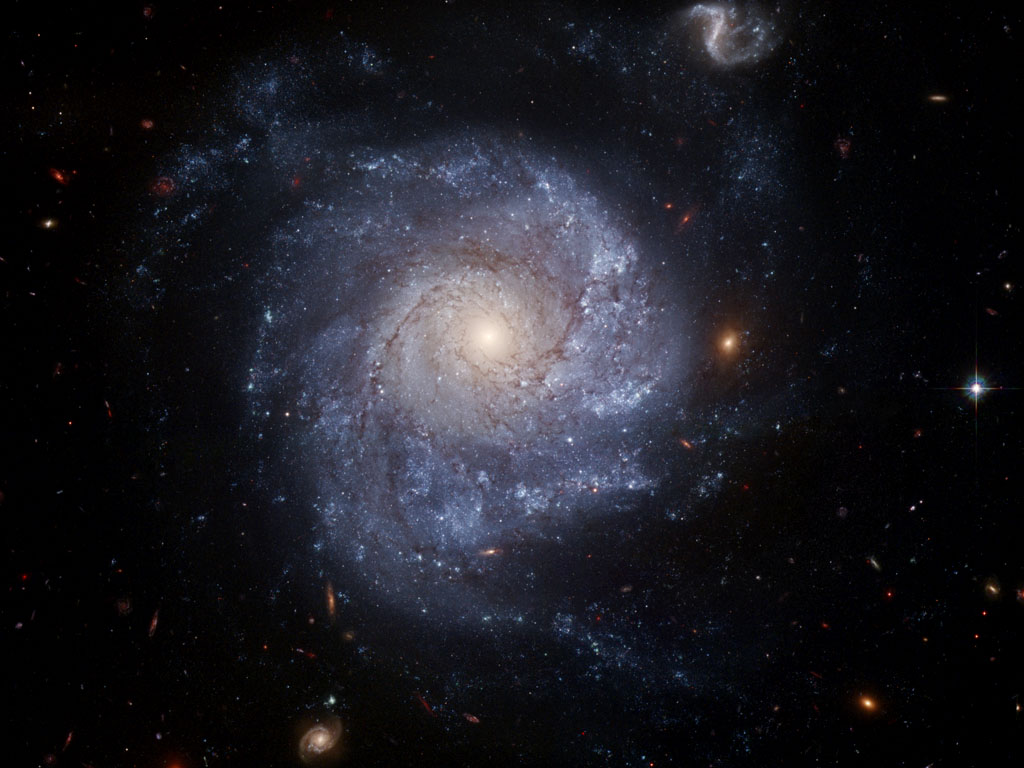

Meet NGC 1309: an idyllic spiral galaxy that is located about 100-million light-years from Earth in the constellation of Eridanus. Spanning around 30,000 light-years across, NGC 1309 is a nearly a third the size of our own galaxy.
Officially, this galaxy’s shape is classified as SA(rs)bc. “S” refers to spiral and “SA” refers to a galaxy without bars (so, basically, it’s a non-barred spiral galaxy). Next, galaxies are broken into those with rings, designated as “(r)” and those without rings have the designation (S)—Addition, there is a transitionary designation of “(rs)”. Finally, the “bc” designation is given because NGC 1309 is in a transitionary stage between a SAb and a SAc galaxy.
Going back to this galaxy specifically, in recent times, NGC 1309 has experience a large number of supernova explosions (of course, they happened long ago—hundreds of millions of years—the light just arrived after its long journey), Between these events and Cepheid variable stars, NGC 1309 is helping us better understand the expansion of the universe.